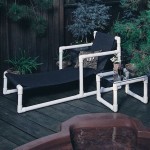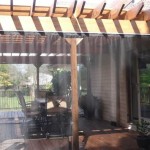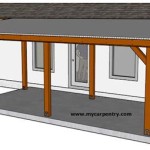How To Fix Uneven Patio Pavers On Sand Driveway
Uneven patio pavers on a sand driveway present both an aesthetic and functional challenge. Over time, the constant pressure from vehicles, weather fluctuations, and natural settling can cause pavers to sink, shift, or become misaligned. Addressing these issues promptly is crucial to prevent further deterioration, maintain the driveway's appearance, and ensure its safety and usability. This article provides a comprehensive guide on how to identify, assess, and rectify uneven patio pavers on a sand driveway.
Before commencing any repair work, proper assessment is paramount. This involves identifying the affected pavers, determining the extent of the unevenness, and understanding the underlying causes. A thorough evaluation helps to plan the repair process effectively and choose the appropriate methods and materials.
Identifying and Assessing the Problem
The first step is a visual inspection of the driveway. Walk across the entire surface, paying close attention to any areas where pavers appear sunken, raised, or tilted. Use a level – a spirit level or even a laser level – to accurately measure the degree of unevenness. A long level that covers several pavers is beneficial for identifying gradual dips or rises.
Mark the uneven pavers with chalk or tape for easy identification during the repair process. It is important to document the severity of the problem on each affected paver individually. The degree of unevenness will influence the repair methodology.
Beyond the surface, it is beneficial to understand what is happening beneath the pavers. This may require lifting a few pavers to inspect the sand bed. Look for signs of erosion, compaction, or inconsistencies in the sand layer. A poorly prepared or maintained sand base is often the root cause of uneven pavers. Identifying the source of the problem prevents recurrence after the repairs are done.
Another factor to consider during assessment is drainage. Check if water is pooling in certain areas, which could indicate poor drainage and contribute to sand erosion. Addressing drainage issues is essential for long-term stability.
Tools and Materials Required
Before beginning the repair process, gather all the necessary tools and materials. Having everything on hand will streamline the work and ensure a more efficient outcome. The following list outlines the essential items:
- Paver Lifter or Flathead Screwdriver: Used to carefully remove the affected pavers without damaging them.
- Rubber Mallet: For gently tapping the pavers back into place.
- Shovel and Trowel: For moving and leveling sand.
- Level (Spirit or Laser): To ensure pavers are perfectly level.
- Measuring Tape: To check the dimensions of the area and pavers.
- Clean Sand: To replace or replenish the existing sand bed. Use paver sand specifically graded for paver installations.
- Work Gloves: To protect hands during the work.
- Safety Glasses: To prevent sand or debris from entering the eyes.
- Broom or Brush: To sweep away excess sand and debris.
- Compactor (Optional): A hand tamper or plate compactor can be used to compact the sand base for added stability, especially in high-traffic areas.
- Joint Sand (Optional): Polymer sand can be used to fill the joints between the pavers, preventing weed growth and sand erosion.
Choosing the right type of sand is vital. Paver sand, also known as coarse sand or bedding sand, is specifically designed for paver installations. It is a granular sand that provides excellent drainage and stability. Avoid using fine sand or builder's sand, as these can compact too tightly and hinder water drainage, leading to future settling and unevenness.
The Repair Process: Step-by-Step Guide
With the assessment completed and the tools and materials assembled, the repair process can commence. The following steps outline the necessary procedures to fix uneven patio pavers on a sand driveway.
- Removing the Affected Pavers: Using a paver lifter or a flathead screwdriver, carefully pry up the uneven pavers. Insert the tool into the joint between the pavers and gently lift. If the paver is stuck, try tapping it lightly with a rubber mallet to loosen it. Work slowly and cautiously to avoid chipping or cracking the pavers. Remove the pavers and set them aside in a safe location.
- Examining the Sand Bed: Once the pavers are removed, inspect the underlying sand bed. Look for any signs of erosion, compaction, or inconsistencies. Remove any debris, such as rocks, roots, or weeds, that may be present.
- Adjusting the Sand Bed: Using a shovel and trowel, add or remove sand to create a level and consistent base. If the sand is compacted, loosen it with a trowel. If there is a depression, add sand to fill it. The goal is to create a smooth, even surface that will support the paver at the correct height. A long level is essential to check the uniformity of the sand base.
- Compacting the Sand Bed (Optional): For added stability, especially in high-traffic areas, use a hand tamper or plate compactor to compact the sand bed. This will help prevent future settling. If using a plate compactor, be sure to protect the surrounding pavers with a layer of plywood or rubber to prevent damage.
- Replacing the Pavers: Carefully place the pavers back onto the prepared sand bed. Ensure that they are aligned with the surrounding pavers. Use a rubber mallet to gently tap the pavers into place, ensuring they are level and flush with the adjacent pavers. Use the level frequently to ensure proper alignment.
- Checking for Level: After placing each paver, use a level to verify its alignment with the surrounding pavers. Make any necessary adjustments to the sand bed to achieve a perfectly level surface. Remember that a gradual, consistent slope for drainage is acceptable and even desirable, but abrupt changes in elevation should be minimized.
- Filling the Joints: Once all the pavers are in place and level, fill the joints between the pavers with sand. Use a broom or brush to sweep the sand into the joints. This will help to stabilize the pavers and prevent weed growth.
- Applying Joint Sand (Optional): For added stability and weed prevention, consider using polymer sand for the joints. Polymer sand is a specialized sand that hardens when wet, creating a durable and weed-resistant joint. Follow the manufacturer's instructions for application. Typically, this involves sweeping the polymer sand into the joints, compacting it with a rubber mallet, and then lightly wetting the surface to activate the binding agents.
- Final Inspection and Cleanup: After completing the repairs, perform a final inspection to ensure that all the pavers are level and aligned. Sweep away any excess sand or debris. Allow the repaired area to settle for a few days before subjecting it to heavy traffic.
Preventing Future Problems
Once the uneven pavers have been repaired, it is essential to take steps to prevent future problems from occurring. Regular maintenance and proactive measures can help extend the lifespan of the paver driveway and maintain its appearance and functionality.
Regularly inspect the driveway for signs of unevenness, erosion, or weed growth. Address any issues promptly before they escalate into larger problems. Small dips or shifts can be easily corrected with minimal effort if caught early.
Sweep the driveway regularly to remove debris, such as leaves, dirt, and gravel. This will prevent the buildup of organic matter that can promote weed growth.
Periodically rinse the driveway with water to remove dirt and grime. Use a garden hose or pressure washer (on a low setting) to clean the surface. Avoid using harsh chemicals or abrasive cleaners, as these can damage the pavers.
Avoid parking heavy vehicles or equipment on the paver driveway, especially in the same spot repeatedly. This can contribute to compaction and settling. Distribute the weight evenly across the surface whenever possible.
Re-seal the pavers every few years to protect them from the elements and prevent staining. Paver sealers can help to preserve the color and appearance of the pavers and make them easier to clean. Follow the manufacturer's instructions for application.
Ensure proper drainage around the driveway to prevent water from pooling and eroding the sand base. Install gutters or French drains if necessary to redirect water away from the paved area.
By following these steps, driveway owners can effectively address uneven patio pavers on a sand driveway, ensuring a safe, aesthetically pleasing, and durable surface for years to come. Consistent maintenance and proactive measures are key to preserving the integrity and longevity of a paver driveway.

How To Fix Uneven Patio Pavers

How To Fix Uneven Pavers Fixing Sinking Guide

How To Reset Pavers The Potato

How Do You Fix Uneven Pavers
Uneven Paver Patio Surface And Solutions

Diy Guide To Fixing Uneven Patio Stones Easily

How To Fix Uneven Pavers A Step By Guide

How To Pave The Ultimate Guide N Paving Centre

How To Re Level Sunken Driveway Blocks Easy Diy Fix

How To Replace Sand Between Pavers Easy Guide
Related Posts








